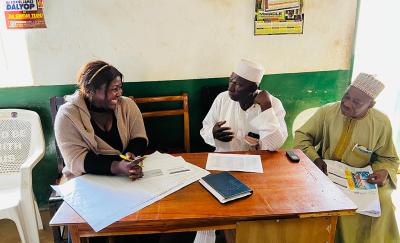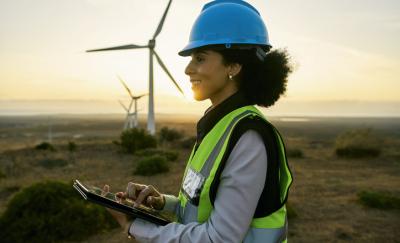Why Climate Should be the Beating Heart of the U.S. Strategy in the Pacific


U.S. President Joe Biden has postponed his visit to Australia, where he was to join the 2023 Quad Leaders’ Summit, which brings together leaders from Australia, the United States, India, and Japan for talks on building peace and stability across the Indo-Pacific region. On its margins, President Biden would have made history by being the first sitting U.S. President to visit a Pacific Island nation when he stopped in Papua New Guinea to meet Pacific Island leaders. A similar meeting took place in Washington last year, where Pacific leaders agreed unanimously that climate change presented the gravest threat to their peace and security. President Biden has announced his intention to undertake this historic visit soon, but the clock is still ticking for the Pacific Islands, which are on the front lines of cataclysmic climate change, experiencing sea level rise and increasing frequency of droughts and storms which impact infrastructure, health, and livelihoods. Summit or no, as the U.S. ramps up its engagement with the Pacific, it is vital that climate is at the center of discussions, even if broader geopolitical dynamics are driving the conversation.
From Hawaii to Guam to American Samoa, the United States is a part of the Blue Pacific, and its greatest contribution to a partnership within the region would be to help coordinate and drive a focused response to the climate crisis. For example, tens of millions of dollars can help Fiji build the seawalls needed to protect hundreds of millions of roads and structures from frequent tidal surges and inexorable sea level rise. In the Solomon Islands, similar sums can help preserve arable land that’s threatened by rising sea levels; the food security of hundreds of communities will be irreparably damaged if steps aren’t taken quickly.
The urgency of the ask would seem to be at odds with the funding that—in theory—is available. The U.S. recently made a $1 billion increase in its commitment to the Green Climate Fund, which will open the door to transformational investment for Pacific Island communities. In addition, the U.S. has influenced the Asian Development Bank and World Bank so that small Pacific Island states can access long-term concessionary finance at scale. These multilateral commitments to financing climate adaptation investments are commendable, but for this funding to be effective, the process of dissemination and implementation needs to outpace the damage being wrought by climate change.
To operationalize the financing that’s available, the United States can help unlock these Green Climate Fund and multilateral resources using the full toolkit available through its bilateral diplomacy and development funding. Technical assistance through the U.S. Agency for International Development will be key to supporting these partners in developing sound proposals to access climate finance for resilience. The strength of U.S. industry should be mobilized to help implement these urgent plans through the Trade Development Agency. And with its expanded authorities under the Better Utilization of Investments Leading to Development Act (BUILD Act), the U.S. Development Finance Corporation should help mobilize private capital alongside public sector resources.
Not only is this the biggest contribution the United States could make to climate resilience in the Blue Pacific, it’s the least costly. The two countries in the region that have developed official National Adaptation Plans—Fiji and Kiribati—both did so with technical support funded by the United States. Every country in the region needs a similarly rigorous national strategy for climate adaptation and resilience. If the United States focused its diplomatic advocacy on securing multilateral funding for the adaptation and resilience priorities of these states right away, these plans could be executed using less U.S. foreign aid funding. At the same time, the Pacific could provide the rest of the world with models of—and best practices for—climate resilience and adaptation, rather than standing at the back of the line while nations with more resources ramp up.
As the U.S. continues to strengthen its relationship with the Pacific Islands, it is critical that building long-term climate resilience in the region remains a top strategic priority. By using diplomacy and development to help the Pacific Islands develop national adaptation strategies, mobilize public and private capital, and boost their ability to access climate finance on the scale that is needed, the U.S. can build an enduring partnership for peace and security across the Blue Pacific. Given the urgency, we hope President Biden will be able to visit the Pacific Islands well in advance of COP 28, to be held in November 2023. A new climate partnership between the United States and the Pacific might spur greater ambition at this COP.
Read More

Pathways to UHC: Nigeria’s State and Local Approaches to Financing Integrated HIV Services and Primary Health Care
Nigeria’s state and local government-driven approaches to integrated primary health care are transforming financial protection and access for vulnerable populations, setting a replicable model for sustainable universal health coverage.

The Next Phase of Financing for Resilience
In our webinar, explore innovative financial strategies to enhance climate resilience and scale finance for sustainable development in emerging markets.

Building Climate Resilience Through Private Sector Partnerships
The Partnership for Climate Action, led by USAID CACCI, helps the private sector contribute to climate resilience through investment and innovation.

Health Systems Research (HSR) 2024
Abt Global is exhibiting and presenting at Health Systems Research (HSR) in Nagasaki, Japan in November 2024.

